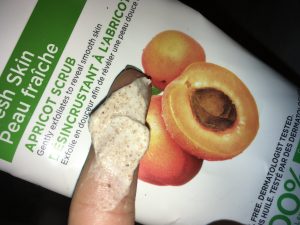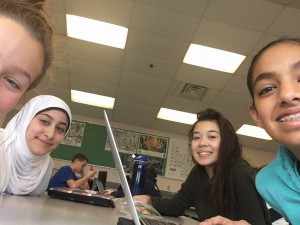Automobile travel
In my day to day life, I will normally be in the car for only about 15 minutes. Every morning I get driven to school along with my 2 younger siblings. I don’t like that far from riverside, but it is too far for me to walk every morning. Most of the time I will pick up my friends who are walking to the bus stop but if i do catch them and we go to school together. I would be able to bus in the mornings but then my siblings do  not have a way to get to school as they are younger and the school isn’t necessarily close. But on my commute home, I take the bus with my friends. I do enjoy taking public transit but there are many things that are good and bad about it. A few things I don’t like about public transit is the fact that the buses may not even come. There’s always a possibility of it being late or not even showing up. This happened a couple times in the winter while it was snowing and i had to carpool with my friends to get back home. Another inconvenient with public transit is that it wont always take you where you need to go. For example, just this past Sunday, I went to MetroTown with my friends and we had to take a 30 minute bus and 20 minute train ride. There are some small distances that need to be walked in between averaging the commute to about an hour. But if we were to drive there, it would only take about 20 minutes. Taking any form of automobile travel effects both the Biosphere and Atmosphere because the cars release nitrogen oxide and carbon monoxide into the atmosphere and the biosphere because in order to drive cars, you need roads. There has been a significant part of our wildlife and forests cut down to make these roads.
not have a way to get to school as they are younger and the school isn’t necessarily close. But on my commute home, I take the bus with my friends. I do enjoy taking public transit but there are many things that are good and bad about it. A few things I don’t like about public transit is the fact that the buses may not even come. There’s always a possibility of it being late or not even showing up. This happened a couple times in the winter while it was snowing and i had to carpool with my friends to get back home. Another inconvenient with public transit is that it wont always take you where you need to go. For example, just this past Sunday, I went to MetroTown with my friends and we had to take a 30 minute bus and 20 minute train ride. There are some small distances that need to be walked in between averaging the commute to about an hour. But if we were to drive there, it would only take about 20 minutes. Taking any form of automobile travel effects both the Biosphere and Atmosphere because the cars release nitrogen oxide and carbon monoxide into the atmosphere and the biosphere because in order to drive cars, you need roads. There has been a significant part of our wildlife and forests cut down to make these roads.
I used to use an exfoliator that had small plastic beads in it that claimed to help your face be smoother and softer but that wasn’t the case. These small beads are being flushed down our drains and into the ocean. They are known to be made out of polyethylene which is commonly used in the production of plastic. Their small size makes them easily mistaken for small items that are commonly digested by marine life and because they are plastic, they will not dissolve and they will remain in either the fish or the ocean. The use if exfoliation beads effects the hydrosphere because they get released into our oceans and the beads impact the creatures living in the water. I stopped using this a while ago because I read that the micro-beads are not only bad for the environment, but also for your skin. I almost immediately switched to a more natural alternative, which was a sugar scrub.
Printer Ink
Because I am a student, I find myself carrying in my bag a lot of papers that were handed out to me by teachers and ones i have printed out myself. Printer Ink is incredibly bad for the environment because of the ingredients in the ink is harmful. Typically, printer ink is made of carbon black which is a produced by the incomplete combustion of heavy petroleum products such as coal tar, ethylene cracking tar, and a small amount from vegetable oil. The cartilages that are used for the ink are often times thrown away and it is estimated that more than 350
million ink and toner cartridges are thrown out each year and that number just increases. The production of ink cartilages are so incredibly harmful to our environment because manufacturing a single toner cartridge releases about 4.8 Kilograms of carbon dioxide into the atmosphere! A single cartridge! I find that we arent disposing of these materials properly therefor, there are hundreds and thoudands of pounds of ink cartilages that are sitting there and they can take nearly 1000 years to decompose because they contain resin which is a sticky flammable organic substance.
Using lights
I use lights everyday of my life. Without them we would be living in the dark most of the time and that is not ideal, but it wouldn’t kill us. Here in British Columbia, we get our energy from hydroelectric dams. They use the power of the flowing current and convert that to energy that we use in our homes and at school/work. I am very thankful that i have a sliding glass door in my bedroom so during the day i can just open my curtains and let in a lot of natural light
and it uses 0 energy which is great! Most of the time my lights are off but at night when the sun is down and you cant depend on the sun to provide you with light, you kind of have to use your lights. I always make sure i turn the light off when i leave a room so we don’t waste any energy. Recently we started replacing our traditional on/off light switches with motion activated ones. Its a very cool idea because if the sensor doesn’t detect movement for 5 minutes, it will shut off by itself.
Using plastic bags
In my household, we always reuse our plastic bags. When my mom goes shopping, she brings those large reusable tote bags for the groceries so that way we can cut back on the amount of plastic we use per day. We have also been using “ziplock” bags for a very long time and recently we have been buying plastic containers to keep our food in so this way we can reuse the containers. Plastic bags aren’t decomposable so they stay in our landfill and a lot of times they end up in our oceans and effects the marine life drastically. The 6 pack plastic rings from cans are a common item that gets stuck either around the neck/body of the creature or even worse, the creature will mistake it for food and becomes stuck in their stomachs as they cant digest it. Plastic bag use effects almost all of the spheres because in the production of the bags, greenhouse gasses are being released into the atmosphere, The chemicals and toxins in plastic bags will find its way to the soil which can kill off small organisms and plants living in the biosphere. And finally the hydrosphere because it may not effect us as much but more the marine life living in the oceans.
Where food is coming from
To be quite honest i didn’t pay attention to where my food is coming from until recently. I used to eat alot of processed food and things that weren’t good for my health or the environment. My family started shopping at organig grocery stores and farmers markets. This is great because farmers markets dont put their food through a huge process of ‘cleaning’ the fruits and vegetables with weird chemicals and wax coatings. Ive watched a few documentries on how we get our meats and the process is chilling. The animals are fed steroids to make the animal larger so there is more meat and more meat=more money. The animals are treated so poorly and so inhumane. They are slaughtered one by one and their bodies just roll off a conveyor belt and into a garbage bin. In these factories, they are producing mass amounts of greenhouse gasses that are incredibly harmful to the atmosphere and the biosphere because they cut down large amounts of land to make these factories.
In conclusion, i believe Humans are destroying the environment through ways such as burning fossil fuels, deforestation, farming and industry, all of which produce huge amounts of greenhouse gases that goes into the atmosphere and effects the air we breath. If we want to maintain our beautiful planet, we all need to work together to do so. We only get one chance at our life on earth. So we better treat it right.





